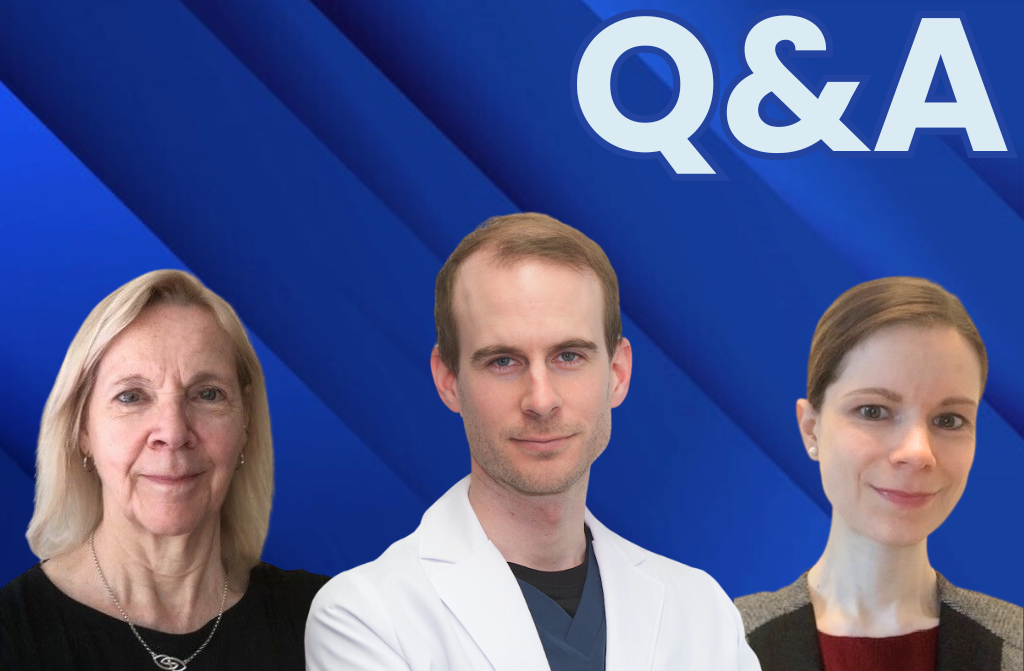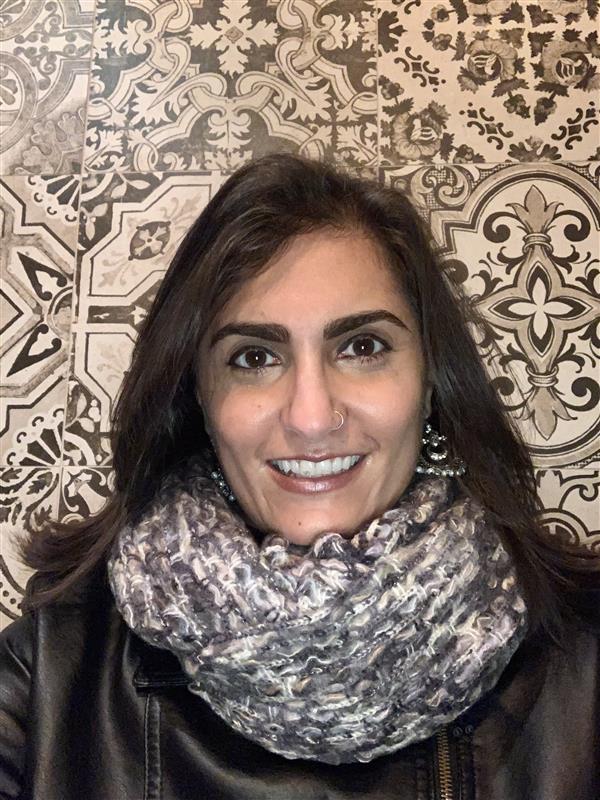Learn about the symptoms, diagnosis, and treatment of alopecia areata, an autoimmune condition characterized by sudden hair loss.
Understanding Alopecia Areata: Expert Insights
Understanding Alopecia Areata: Expert Insights
Discover what to anticipate during your dermatologist visit, find answers to common questions, and delve into the emotional journey of managing this unpredictable condition.
February 15, 2024
GHLF STAFF

We spoke with board-certified dermatologists Cathryn Sibbald, BScPhm, MD, MSc, and Julien Ringuet, MD, MSc, FRCPC, along with clinical psychologist Laurie Ferguson, MD, to understand the clinical and emotional aspects of alopecia areata.
Here, we’ll address some common patient questions, including what to expect during your dermatologist visit, available treatment options, and how to manage the emotional impact of this unpredictable condition.
Q: Can you explain alopecia areata in simple terms?
Dr. Sibbald: Alopecia areata is a condition where the immune system mistakenly attacks hair follicles, causing hair loss. It’s a non-scarring type of hair loss, meaning the hair follicles aren’t completely destroyed. People with alopecia areata experience fluctuating hair loss and spontaneous regrowth, but it’s highly unpredictable.
Q: What should a patient expect during their initial visit to a dermatologist if they suspect alopecia areata?
Dr. Sibbald: During your first visit to a dermatologist for suspected alopecia areata, the doctor will likely ask about when the hair loss started and how it has changed. In many cases, this clinical assessment is sufficient for a diagnosis. Occasionally, the dermatologist may use tools like a dermatoscope for a closer look, and bloodwork may be requested, either to investigate associated medical conditions or if specific medications are being considered.
Q: What are some common questions that patients often ask you about alopecia areata?
Dr. Sibbald: Patients often have several questions about alopecia areata, including:
- Is it contagious? No, it’s not contagious.
- What’s the prognosis? Unfortunately, it’s highly unpredictable.
- Is nutrition or hormones linked to alopecia areata? Generally, nutrient and hormone deficiencies aren’t associated with it. Alopecia areata is more likely linked to immune disorders affecting the thyroid. Other hair loss types like Telogen Effluvium, related to stress, and Androgenetic alopecia, related to hormones, may involve nutrition and hormones, respectively.
Q: What treatments are available now for alopecia, and what’s in the pipeline?
Dr. Ringuet: The therapy selection is based on many factors, including age, extent of disease, previous treatment, comorbidities, psychosocial burden of disease, various contraindications, accessibility to care and/or reimbursement coverage, and patient preference.
Overall, for mild diseases, international consensus suggests topical therapies and/or intralesional including topical/intralesional corticosteroids, topical minoxidil, and more rarely topical calcineurin inhibitors, contact immunotherapy (DPCP, anthralin), and bimatoprost.
The topical or intralesional corticosteroids need to be adapted to the site treated (more potent treatment for scalp and milder potency treatment for eyebrows). Eyelashes, although associated with a significant physical and psychosocial burden, are less amenable to topical and intralesional therapy.
Some additional intralesional interventions that have been used off-label include Platelet-Rich-Plasma (PRP) and various other forms of mesotherapy.
As for systemic treatments, there is evidence of efficacy for systemic corticosteroids (either continuous for a certain number of weeks or a certain number of days during a week (ex: 2d/7d). Their use is limited by potential short- and long-term side effects.
Other systemic treatments used are immunosuppressants including methotrexate and cyclosporine but efficacy data are limited and they need close follow-up to ensure good tolerability.
Finally, the past couple years have seen emergent treatments changing the alopecia areata treatment landscape. Those include JAK inhibitors with two agents approved by the FDA for this indication namely Baricitinib (18 years and up) and Ritlecitinib (12 years and up). As for the Canadian population, Ritlecitinib is the first and only approved JAK inhibitor since December of 2023.
Q: Before a patient starts any treatment, what are some important topics they should discuss with their doctor?
Dr. Ringuet: Before making a treatment choice, a thorough discussion should take place between the patient and their caregiver on various key elements of the decision-making process including but not limited to:
- Psychosocial impact
- Comorbidities (associated diseases to be addressed)
- Efficacy data and realistic expectations in terms of the speed of onset of response and evolution of disease state
- Safety data of various treatment options
- Monitoring when necessary
- Time involvement
- Insurance coverage and costs
Q: In your experience, how long does it usually take for patients to start seeing changes from alopecia treatments?
Dr. Ringuet: As for any diseases, not every patient responds the same way. For all categories, there are fast responders, late responders, as well as non-responders. Identifying characteristics to predict this endpoint is difficult.
Nonetheless, once the hair shaft has been targeted by the immune system resulting in alopecia, the disease treatment needs to allow for local immune stabilization and then for the hair bulb to regrow from its roots all the way to the surface and for the hair to further mature (passing from a vellus state (baby hair) to mature hair).
This process can take some time, but in general, when a treatment is working you can expect to see some regrowth between four to 12 weeks. The initial hairs are usually thinner and paler than mature hairs in which they may develop. Again, to obtain a pleasing aesthetic result, especially for people who expect long hair, this may take several months to a year or more.
Q: How can addressing the mental/emotional health aspect of alopecia make a significant difference in a patient’s overall well-being?
Dr. Ferguson: There is a significant mental and emotional impact on anyone who is diagnosed with, and then lives with alopecia. It begins with even getting a diagnosis, which can be frustrating and then deeply upsetting. Then there is the daily reminder and the stages of grieving and learning to see yourself and live in a new way.
All of this requires mental and emotional reserves and involves finding new ways to think and feel about oneself. Recognizing that this is a process, and that it is not ‘merely’ physical, opens pathways to get support, talk, and cry through the new reality, and learn ways of coping with the variety of emotions and thoughts. It is hard to overestimate the value of understanding that life with alopecia is three or four dimensional — not just physical.
Q: What advice would you give to someone who has just been diagnosed with alopecia and is struggling with the emotional impact of hair loss?
Dr. Ferguson: Before giving any advice, I would listen. Everyone’s story is a little different, and what most people need is space to tell their story to someone who is able to sit with the array of feelings and reactions. Witnessing how each person is feeling and thinking about their experience of alopecia is the first step. Then I would advise them to find spaces where they can talk freely — hopefully with others who understand what living with alopecia means.
Support groups are invaluable. Having a trusted other — best friend, parent, counselor, religious leader — whoever that person is where you feel safe and trust them not to minimize or try to ‘fix’ feelings, provides some time and space to begin to figure out how to live the new reality. Talking is essential.
If someone is struggling to the point where they don’t want to leave the house or go out, if the depression seems to be deepening and not resolving, and in particular, if the feelings are so intense that life does not seem worth living, then it is important to find a trained therapist.
Q: From your perspective, how important is it for patients to seek both medical and mental health support when dealing with alopecia?
Dr. Ferguson: From my perspective, it is imperative for someone who is diagnosed with alopecia to have both medical and mental health support. The medical aspect is self-explanatory. This is an illness that needs to be treated. But responding to the reality of hair loss, and then figuring out how to accept this reality and readjust your sense of yourself in the mirror and in the world, is a big task.
Having someone to turn to who is not a family member or a friend, but a trained empathetic listener who is there completely for you is an essential part of the healing journey.
There are many issues to navigate — social life, figuring out and practicing going out in public, work life, romance — it makes a difference when someone is helping you develop strength and resilience, define your identity, and stay close during the hard times.
From Hair to There: Life with Alopecia
GHLF’s podcast “From Hair to There: Life with Alopecia” raises awareness, amplifies the patient voice, and offers expert resources to support individuals living with alopecia areata. Listen now.
This article was made possible with support from Pfizer.
SUBSCRIBE TO GHLF
RELATED POST AND PAGES
_
Was this article helpful?
YesNo






